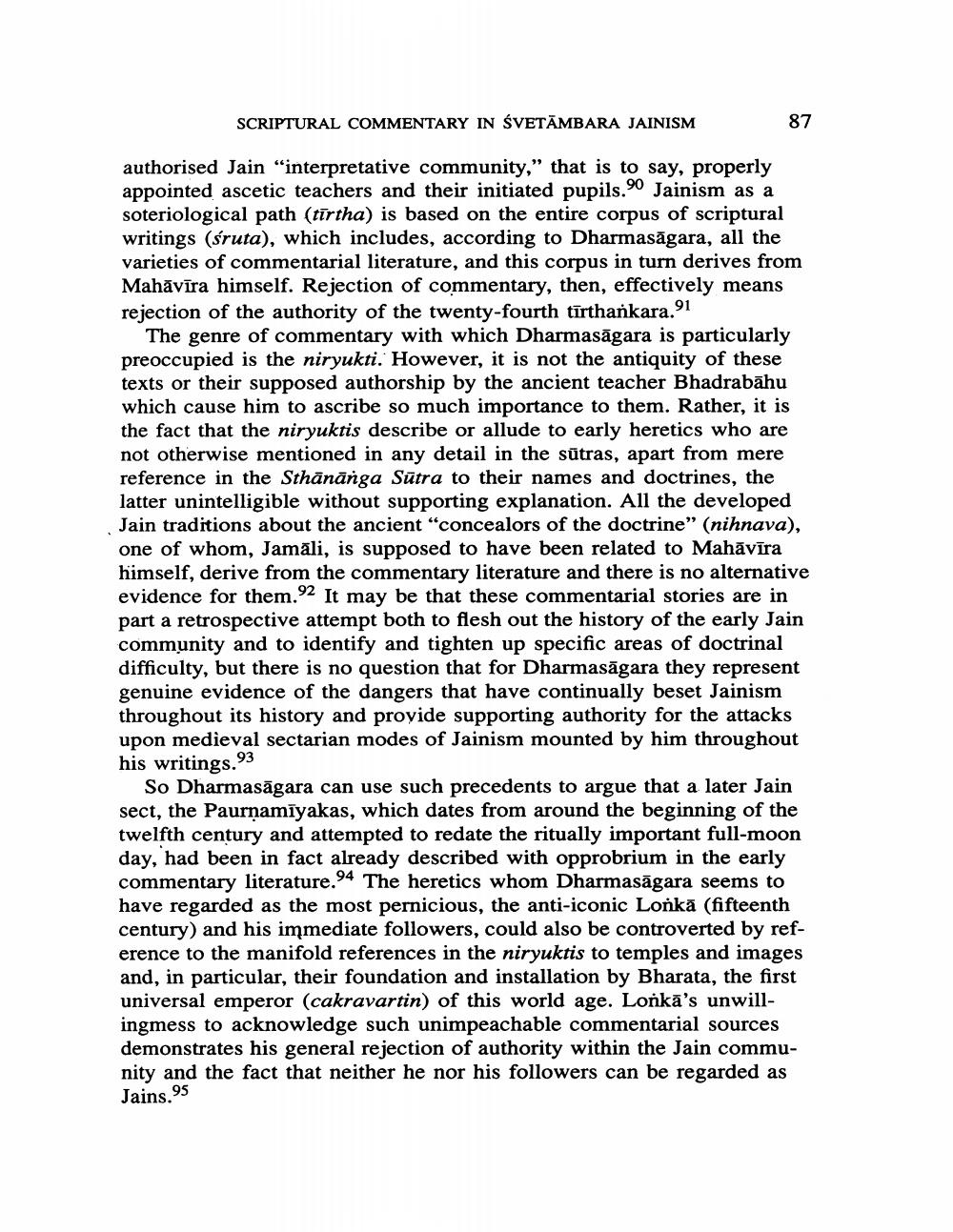________________
SCRIPTURAL COMMENTARY IN SVETĀMBARA JAINISM
87
authorised Jain "interpretative community," that is to say, properly appointed ascetic teachers and their initiated pupils.90 Jainism as a soteriological path (tīrtha) is based on the entire corpus of scriptural writings (śruta), which includes, according to Dharmasagara, all the varieties of commentarial literature, and this corpus in turn derives from Mahāvīra himself. Rejection of commentary, then, effectively means rejection of the authority of the twenty-fourth tīrthankara.91
The genre of commentary with which Dharmasāgara is particularly preoccupied is the niryukti. However, it is not the antiquity of these texts or their supposed authorship by the ancient teacher Bhadrabāhu which cause him to ascribe so much importance to them. Rather, it is the fact that the niryuktis describe or allude to early heretics who are not otherwise mentioned in any detail in the sūtras, apart from mere reference in the Sthānānga Sūtra to their names and doctrines, the latter unintelligible without supporting explanation. All the developed Jain traditions about the ancient "concealors of the doctrine" (nihnava), one of whom, Jamāli, is supposed to have been related to Mahāvīra himself, derive from the commentary literature and there is no alternative evidence for them.92 It may be that these commentarial stories are in part a retrospective attempt both to flesh out the history of the early Jain community and to identify and tighten up specific areas of doctrinal difficulty, but there is no question that for Dharmasāgara they represent genuine evidence of the dangers that have continually beset Jainism throughout its history and provide supporting authority for the attacks upon medieval sectarian modes of Jainism mounted by him throughout his writings.93
So Dharmasāgara can use such precedents to argue that a later Jain sect, the Paurņamīyakas, which dates from around the beginning of the twelfth century and attempted to redate the ritually important full-moon day, had been in fact already described with opprobrium in the early commentary literature.94 The heretics whom Dharmasāgara seems to have regarded as the most pernicious, the anti-iconic Lońkā (fifteenth century) and his immediate followers, could also be controverted by reference to the manifold references in the niryuktis to temples and images and, in particular, their foundation and installation by Bharata, the first universal emperor (cakravartin) of this world age. Lonkā's unwillingmess to acknowledge such unimpeachable commentarial sources demonstrates his general rejection of authority within the Jain community and the fact that neither he nor his followers can be regarded as
Jains. 95




